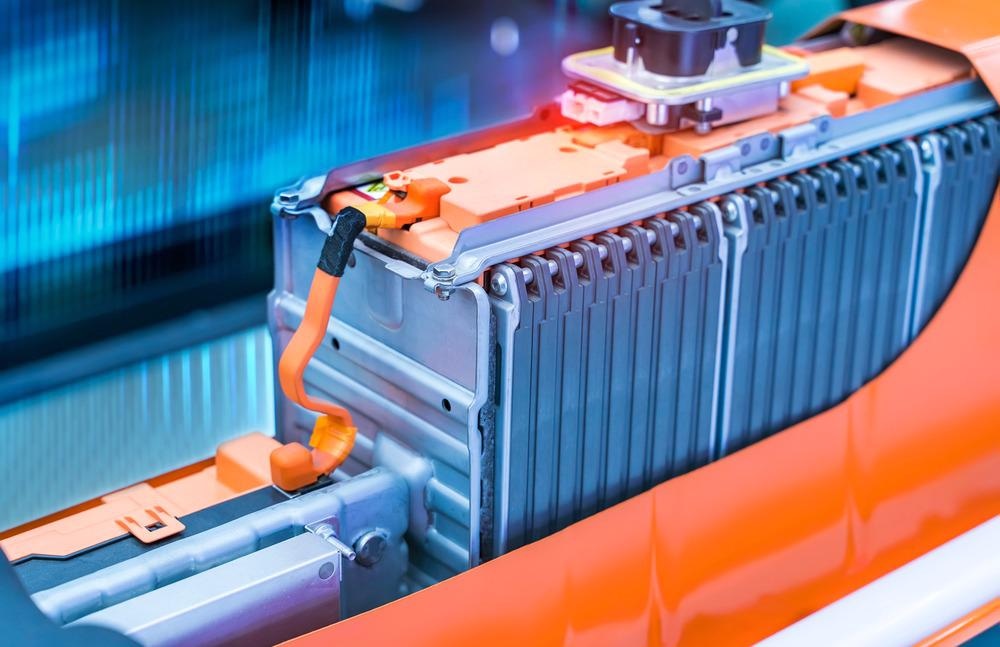A team of researchers from Denmark’s Aalborg University and Blue World Technologies ApS have collaborated on a new paper published online in Energies. In the paper, they have reported a hybrid system using a methanol fuel cell and a battery for use in power backup systems for the telecom industry. The system’s operating strategy was optimized using modeling, with favorable device performance results reported by the authors.

Study: Modeling a Hybrid Reformed Methanol Fuel Cell–Battery System for Telecom Backup Applications. Image Credit: asharkyu/Shutterstock.com
Overcoming the Issues with the Global Telecommunications Industry in the 21st Century
The global telecommunications industry is undergoing exponential growth currently, with subsequent increases in power demands. By 2025, annual global connections are predicted to reach one hundred billion, and the rise of 5G technologies is placing further power demands on telecommunications infrastructure, which traditionally exploits fossil fuels to meet its energy needs.
5G alone could account for a 160% increase in power demands for the industry. Whilst a single 5G base station consumes little power, around 1000-1400 W, several bands need to be allocated in the same area as 5G band ranges are smaller than conventional 4G bands. This consequently leads to an increase in power demand for 5G base stations. The power consumption of 5G equipment can be up to 1.7 times more than 4G equipment.
Due to these issues, greener energy sources are needed in the telecommunications industry that can cope with the power demands of 5G infrastructure and the growing use of telecommunications equipment worldwide. Additionally, there is a need for green power generation that can ensure continued network stability. Moreover, innovative solutions are needed to reduce the environmental impact of the industry and keep it in line with internationally agreed carbon reduction commitments.
Traditional Backup Systems
Traditional power backup systems typically utilize diesel generators of lead-acid batteries. Both types of systems have their drawbacks. Diesel generators, whilst reliable, run on polluting fossil fuels and are expensive to operate. Batteries, whilst being a greener, low-cost option, are limited by their low energy density and susceptibility to high temperatures.
In recent years, a third type of backup system has been developed and is gaining popularity as it addresses the issues faced by conventional systems. PEM fuel cells are based on proton exchange membranes. These power systems are compact, clean, reliable, efficient, quiet, cheap to maintain compared to diesel generators, and possess higher energy density than some conventional battery backup systems. However, they require higher capital costs, and compared to battery-only systems, they have slow transient and start dynamics.
More from AZoM: How are Micrometers Used to Measure Surface Metrology?
Hybrid fuel cell-battery systems have been explored extensively in the automobile and maritime industries, with some limited research on their application as power backup systems. Studies have indicated that their efficiency and system dynamics can be enhanced, overcoming their limitations. Furthermore, the size and cost of these systems can be reduced due to the use of two power sources.
Hydrogen has been explored as a fuel for these hybrid systems. This fuel choice has significant benefits, especially for telecommunications equipment such as cell towers in remote areas where it may be difficult to refuel backup power systems. Due to the need to provide backup power for extended periods of time and the expensive nature of hydrogen liquefaction and compression, storing hydrogen in alcohols and liquid hydrocarbons is a highly practical approach.
Methanol, which can be produced cheaply and locally, is a prime candidate for hydrogen carriers for use in backup power systems. Hybrid systems that combine methanol fuel cells and batteries overcome many issues with conventional power backup systems.
The Research
The authors have reported the development of a novel hybrid power backup system. The system developed in the research combines a reformed methane-fed high-temperature PEM fuel cell and a battery pack. The hybrid device has been proposed as a solution for the power backup needs of the telecommunications industry.
MATLAB Simulink was used for system modeling. A state-based EMS was employed for system optimization by extending the fuel cell’s lifetime and keeping the battery’s SOC within reasonable values to avoid thermal stress and degradation of the device. By comparing BOL and EOT performance, the system’s degradation was evaluated by the authors. Performance after 1000 hours and two hundred and fifty cycling tests was evaluated in the research.
Twelve operating conditions were used to characterize the EMS, using load requirements, SOC, and the absence or presence of a power grid as inputs. Methanol consumption was predicted for different scenarios, and additionally, the authors investigated an integrated photovoltaic solar system.
The authors have stated that extensive night-time power outages can impact the battery’s SOC. This can cause critical conditions and consequently could increase the consumption of hydrogen fuel. Fuel consumption was not affected by the integrated photovoltaic system, and additionally, the photovoltaic system enhanced the hybrid power backup’s daytime performance by avoiding low battery SOC.
Further Reading
Martinho, D.L et al. (2022) Modeling a Hybrid Reformed Methanol Fuel Cell–Battery System for Telecom Backup Applications Energies 15(9) 3218 [online] mdpi.com. Available at:
Disclaimer: The views expressed here are those of the author expressed in their private capacity and do not necessarily represent the views of AZoM.com Limited T/A AZoNetwork the owner and operator of this website. This disclaimer forms part of the Terms and conditions of use of this website.